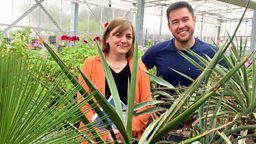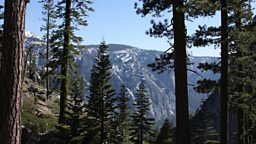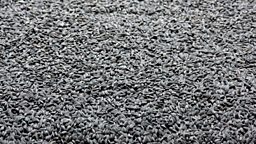Seven strange facts about the world's toughest plants
In Costing the Earth, James Wong explores how climate change will impact our ability to grow food, and how crops can adapt to changing conditions. But what makes one plant more likely to survive than another? We’ve uncovered some strange and surprising facts about some of our hardiest plants.

1. Ancient vegetation could thrive on Mars
Scientists in Germany think they’ve identified two types of plants tough enough to survive on Mars. It’s no surprise that their top picks – lichens and cyanobacteria – are thought to be some of the first species to colonise earth. The researchers recreated conditions on the Red Planet, including searing solar radiation, fluctuating temperatures, extreme dryness and low air pressure, to test whether these hardy primordial plants could stay alive. But the species – taken from Switzerland and the Antarctic – did more than just hang on in there, they continued to photosynthesise and carry out their normal plant activities.

2. Cloning is the key to longevity
The oldest individual living tree is thought to be a bristlecone pine in eastern California, identified as 5062 years old in 2012. But to achieve even more impressive longevity, some trees have a canny trick up their sleeves: cloning. In clonal colonies, genetically identical trees are joined up to the same root system, which can survive for thousands of years. The Pando colony in Utah, USA, is around 80,000 years old, while the Jurupa Oak in California is thought to be 13,000 years old.

3. ‘Living stones’ could create more efficient crops
Lithops or ‘living stones’ may look like rocks, but these incredible South African organisms are actually plants in disguise – and they could hold the key to more efficient crops. The plants are able to survive in extreme desert conditions and rocky terrain, using camouflage to prevent them from being eaten. Although they grow mostly underground, lithops have a translucent top layer to allow sunlight in, which they then turn into energy. Researchers hope that understanding lithops’ ability to harness both bright light above ground and low light below it could help us develop more efficient crops in the future.

4. Climate change could replace coffee with cocoa
Increases in temperature are threatening to kill off our most common coffee bean, but a more resilient crop is ready to replace it: cocoa. The arabica coffee variety struggles in warmer weather and becomes more susceptible to leaf rust, a disease that has decimated coffee plantations in Central America in recent years. As temperatures rise, lower-lying plantations are finding it harder to produce quality coffee, threatening thousands of people’s livelihoods. Farmers in Nicaragua, Honduras and El Salvador are already switching to growing cocoa – a hardy crop that thrives in hot climates. So you might just see your morning espresso replaced by a shot of hot chocolate in a few years’ time.

5. Some trees spread with wildfire
Eucalyptus trees aren’t just tough – they can be dangerous too. These natural fire starters produce flammable oil, and drop dry leaves and bark that can easily ignite to cause devastating wildfires. When fire breaks out, eucalyptus trees thrive. The heat of the inferno activates their seed pods, and while other plants struggle to regenerate, eucalyptus saplings flourish in the charred ground.

6. Plants can adapt to nuclear conditions
Radiation disrupts living cells and damages DNA, so you might think it would be impossible for plants to survive after a nuclear accident. But scientists investigating the effects of the 1986 Chernobyl disaster discovered that this isn’t always the case. Experimenting with flax and soybean, they found the plants were able to adapt their biology in order to flourish in the contaminated environment. The researchers believe this ability to accommodate nuclear fallout may have developed millions of years ago when the planet had far higher levels of radiation.

7. Seeds can survive for 32,000 years
Russian researchers have brought to life a long extinct plant, using seeds buried by a squirrel 32,000 years ago. The ice age traces of silene stenophylla, were found in a frozen riverbank in Siberia. Scientists took tissue from the seeds and used it to germinate new plants, which then went on to reproduce on their own. Experts hope this could be the first of many extinct plant species to be resurrected from remains stored in the arctic permafrost.

-
![]()
James Wong on the World's Toughest Plants
Investigating the link between global warming and the rate at which crops are able to adapt and evolve.
-
![]()
Seven things we’ve learnt from Monty Don
The Gardeners' World presenter imparts some gardening words of wisdom.
-
![]()
Pick your own wedding flowers
The next DIY wedding trend explained.
-
![]()
What it's like to go on a shepherd training course
Do you ever dream of a life in the countryside – out on the hills, tending your sheep?




